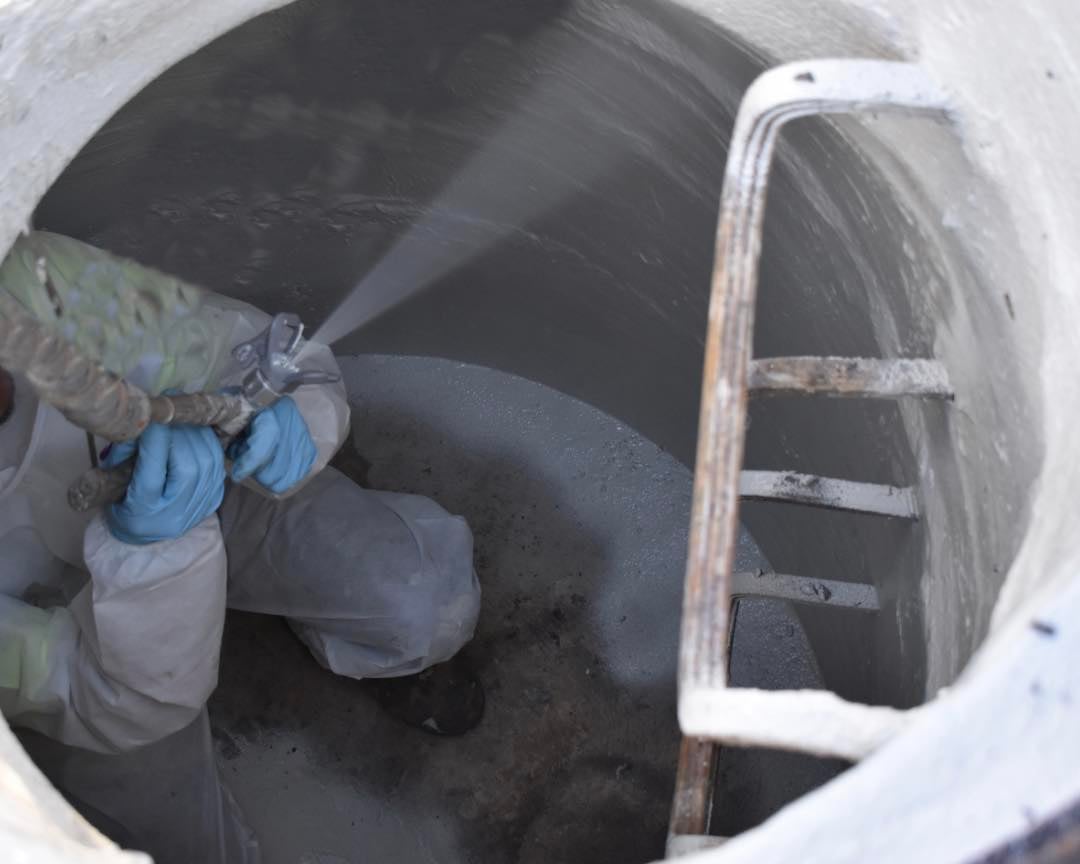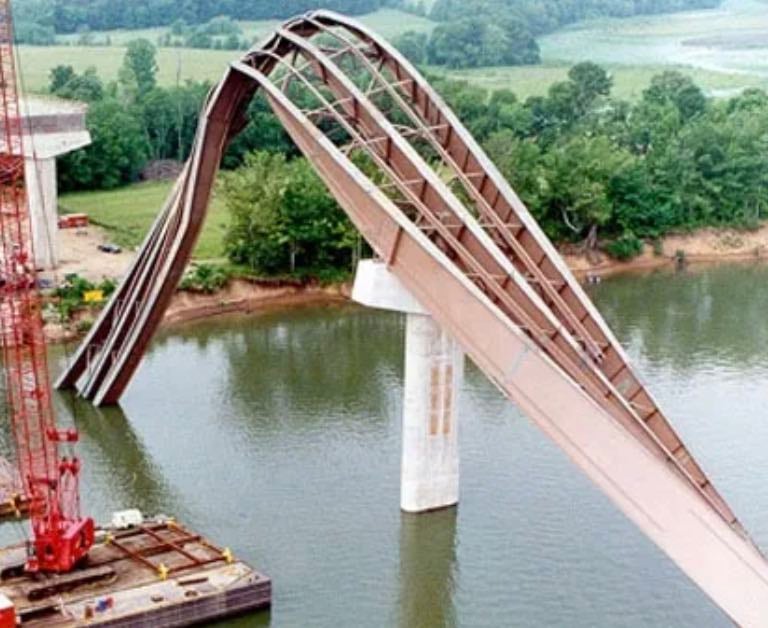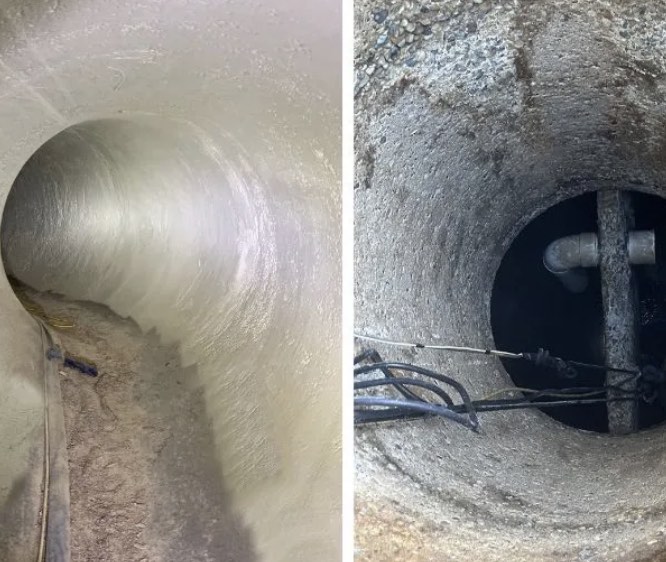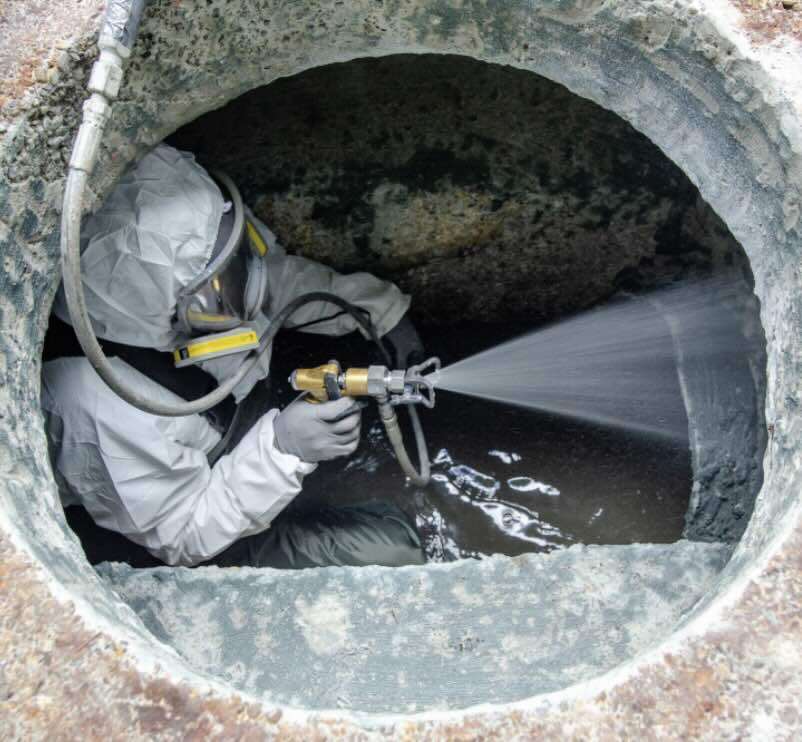
What is Structural Epoxy and Can it Benefit Waste Collection Systems?
Structural epoxy is commonly used in wastewater collection systems due to its high chemical resistance and durability.
- High Performance Coatings
The Complete Guide to Structural Epoxy in Wastewater Collection Systems
Municipal infrastructure managers face a relentless enemy: the corrosive environment within wastewater collection systems. While the original blog touched on key benefits, the full picture reveals even more compelling reasons why structural epoxy coatings like EpoxyTec CPP Sprayliner and CPP Troweliner have become the gold standard for wastewater system protection.
Understanding the Wastewater Environment
The Chemical Battlefield
Wastewater systems create what engineers call "biogenic sulfuric acid attack." This happens when:
- Hydrogen sulfide gas (H2S) forms from anaerobic bacterial activity
- The gas then oxidizes into sulfuric acid when exposed to oxygen
- This acid can reduce concrete pH from 13 to less than 1
- Unprotected concrete can lose up to 1 inch of thickness annually
The True Cost of Inaction
Recent studies show that:
- Infiltration and inflow costs utilities an average of $500,000 annually per collection system
- Emergency repairs can cost 3-5 times more than preventive maintenance
- System failures can result in EPA fines ranging from $10,000 to $50,000 per day
- Untreated I&I can reduce treatment plant efficiency by 25-40%
Deep Dive: Why Epoxy Outperforms Traditional Solutions
Chemical Resistance: The Science Behind Protection
Structural epoxy coatings create a cross-linked polymer network that:
- Forms covalent bonds stronger than the substrate itself
- Provides molecular-level resistance to acid penetration
- Maintains integrity at pH levels from 0 to 14
- Resists 99% of common wastewater chemicals
Comparative analysis shows:
| Protection Method | Acid Resistance | Service Life | Cost Efficiency |
|---|---|---|---|
| Unprotected Concrete | Poor | 10-15 years | Low |
| Cementitious Coating | Moderate | 15-20 years | Moderate |
| Structural Epoxy | Excellent | 50+ years | High |
Water Resistance: Beyond the Surface
The waterproofing capabilities of structural epoxy go deeper than simple moisture blocking:
- Creates negative water pressure resistance up to 150 PSI
- Prevents capillary action that can draw contaminants into concrete pores
- Blocks aggressive ions that accelerate corrosion
- Maintains elasticity to accommodate structural movement
Adhesion: The Foundation of Performance
Superior adhesion means:
- Bond strength exceeding substrate tensile strength
- Resistance to hydrostatic pressure reversal
- Performance in both wet and dry applications
- Ability to bridge minor cracks and prevent propagation
Advanced Applications and Benefits
Specialized System Components
Manholes: Often the most vulnerable points in the system
- Crown protection from sulfide gas concentration
- Bench coating to resist flow turbulence
- Inlet and outlet sealing for complete protection
Lift Stations: High-stress environments requiring robust protection
- Chemical resistance for mixed waste flows
- Abrasion resistance for pumping equipment
- Waterproofing for below-grade structures
Force Mains: Unique challenges for pressurized systems
- Resistance to dissolved oxygen corrosion
- Protection against velocity-induced erosion
- Smooth surface to prevent biofilm formation
Economic Analysis: ROI and Lifecycle Costs
Initial Investment Breakdown:
- Structural epoxy system: $3-8 per square foot
- Preparation costs: $1-3 per square foot
- Application labor: $2-5 per square foot
- Total: $6-16 per square foot
Long-term Savings:
- Reduced treatment costs: $100,000-500,000 annually
- Avoided emergency repairs: $50,000-200,000 per incident
- Extended asset life: 30-40 additional years
- Reduced manholes replacements: $8,000-15,000 per unit
Environmental and Regulatory Considerations
Compliance Benefits:
- Meets EPA's Asset Management Plan requirements
- Supports Clean Water Act compliance
- Reduces environmental liability
- Demonstrates proactive infrastructure management
Sustainability Impact:
- Reduces energy consumption for unnecessary treatment
- Minimizes construction waste from premature replacements
- Decreases carbon footprint of repair operations
- Conserves raw materials for new infrastructure
Advanced Selection Criteria
Material Specifications
When selecting structural epoxy systems, consider:
- Glass Transition Temperature (Tg): Should exceed 80°C for optimal performance
- Shore D Hardness: 75+ for wastewater applications
- Tensile Strength: Minimum 4,000 PSI
- Compressive Strength: Over 10,000 PSI
- Water Vapor Transmission: 0.05 perms or less
- Water Absorption: No more than 0.174 weight gain for 24 Hours
- Application to Damp Surfaces: Required
Application Methods
Spray Application (EpoxyTec CPP Sprayliner):
- Ideal for large surface areas
- Provides pinhole-free coverage
- Allows for quick application in confined spaces
- Achieves consistent thickness
- Can be applied up to 375 mils in 1-coat
Trowel Application (EpoxyTec CPP Troweliner):
- Perfect for repairs and detailed work
- Allows for thicker applications
- Suitable for vertical surfaces
- Provides aesthetic finish when needed
- Can be applied up to 500 mils in 1-coat
Real-World Case Studies
Ohio: Manhole Rehabilitation Program
- Protected 500+ manholes with structural epoxy
- Reduced annual maintenance costs by 60%
- Eliminated 80% of overflow complaints
- Achieved 100% inspection compliance rating
Oregon: Lift Station Protection
- Applied EpoxyTec CPP to 45 critical lift stations
- Extended operational life by 35 years
- Reduced emergency repairs from 12 to 1 annually
- Saved $2.3 million in replacement costs
Implementation Best Practices
Surface Preparation: The Critical Foundation
Proper preparation includes:
- Surface Profiling: Achieve minimum ICRI CSP-5 profile
- Contaminant Removal: Eliminate oils, salts, and biological films
- Moisture Testing: Ensure substrate moisture content below 4%
- pH Assessment: Verify surface pH is above 9
Quality Control Measures
During Application:
- Dry Film Thickness (DFT) testing every 100 square feet
- Holiday testing to identify pinholes
- Environmental monitoring for temperature and humidity
- Batch testing for proper mixing ratios
Post-Application:
- Pull-off adhesion testing (minimum 400 PSI)
- Chemical resistance verification
- Visual inspection with high-intensity lighting
- Documentation for asset management records
Strategic Planning for Utilities
Asset Management Integration
Implementing structural epoxy protection should align with:
- Capital improvement planning cycles
- Risk assessment protocols
- Regulatory compliance timelines
- Budget forecasting models
Prioritization Framework
Rank protection needs based on:
- System Criticality: Impact on overall operation
- Condition Assessment: Current degradation level
- Consequence of Failure: Potential damage and costs
- Accessibility: Ease of future maintenance
Conclusion: The Path Forward
The evidence is clear: structural epoxy coatings represent more than a protective measure—they're a strategic investment in the future of wastewater infrastructure. With proven performance spanning decades, comprehensive protection against multiple degradation mechanisms, and substantial financial benefits, systems like EpoxyTec CPP Sprayliner and CPP Troweliner set the standard for modern wastewater system preservation.
For utility managers, engineers, and maintenance professionals, the question isn't whether to implement structural epoxy protection, but rather which specific solution best addresses their unique challenges. By partnering with experienced High Performance Coating consultants, municipalities can develop tailored strategies that maximize ROI, ensure regulatory compliance, and deliver reliable service to their communities for generations to come.
Transform your wastewater infrastructure challenges into opportunities for resilience and efficiency. Connect with our team of experts to explore comprehensive epoxy solutions designed for your specific operating environment.
LET OUR KNOWLEDGE AND EXPERTISE HELP ENSURE YOUR NEXT PROJECT IS SUCCESSFUL
Check out these additional resources:
Don't miss these projects:

Should I Repair or Replace Steel Members?
Steel structures form the backbone of our...

SIPP Technology: Pipeline Rehabilitation Done...
Sprayed in Place Pipe (SIPP) technology...
